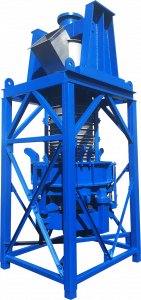How Does a Vertical Pump From Hydroflo Pumps Work?
When discussing Hydroflo Pumps, most business owners understand that you are talking about one of the most dependable manufacturers on the market. The company specializes in centrifugal pumps, but more specifically, submersible and vertical turbine pumps. These pumps are useful tools in several manufacturing or producing markets, like farming, mining, and other industrial models. Beyond commercial production, turbine pumps are helpful in municipal applications as well.
Vertical pumps tend to work better in specific settings, but it isn’t easy to know if it suits your needs without understanding the pump. To get the most use out of a vertical pump, you need to understand the intent of the design and its mechanics. The remainder of this article will help inform your future purchasing decision.
Defining the Vertical Turbine Pump
The centrifugal pump known as the vertical pump, deep well, or lineshaft pump, transports water from underground wells and reservoirs. While submersible turbine pumps are also useful in this regard, a vertical pump is often more practical because of its design. The primary difference between a submersible and a vertical pump is the placement of the motor. Submersible systems have the motor housing on the bottom of the pump, which is then placed in the water. While the housing is waterproof, damage can occur, especially when pumping from deeper water sources.
The vertical turbine pump, alternatively, has the motor mounted above ground, which is then connected to the impellers through a long vertical shaft. The design of the vertical system means that the engine remains dry and free of potential risk, which is why many deep well operators prefer to use the vertical structure. The mechanics of the system also make the vertical pump more customizable than other options on the market, which is another plus for business owners.
Learning How It Works
The vertical turbine systems through Hydroflo Pumps are versatile and customizable. Depending on your needs, you can choose a diesel engine that drives the system through an angled drive, or you can opt for an AC electric induction motor. Beyond engine selection, you can also choose the number of impellers for your system. While every vertical propeller requires at least one rotating propeller to direct water into the bowl or diffuser casing, the number of propellers above that casing is up to the owner.
The impellers work to build water velocity and pressure, helping to propel the liquid from the bottom of a well through the system. The first propeller increases the speed by forcing the water through the suction bell at the base of the pump. The water then enters the diffuser bowl, where velocity energy is transformed into high pressure and directed up the shaft. Depending on the well depth, multiple propellers can help to build more velocity and pressure.
Beyond the impellers and the diffuser bowl, the system uses a spinning shaft to help move water from the pump to the discharge head. The motor, above the discharge head, helps to create the necessary momentum to change the flow direction, pointing it to the discharge pipe.
Understanding the Uses
Companies and municipal services tend to use vertical pumps when submersible pumps are not an option because of flow demands. However, motor placement can also play a role. Some common examples where a vertical pump is more beneficial than a submersible pump would be with bored wells for turf and agricultural irrigation. Industrial plants may also use vertical systems for make-up or fire water demands. Finally, a municipality dependent on groundwater rather than surface water will likely use a vertical pump.
Beyond specific needs, many companies choose vertical pump options because of the versatility of the system. For example, these systems are capable of pumping 50 GPM to 30,000 GPM or higher. Also, the customization and options for multiple stages to generate greater head is often preferable. Companies also appreciate the various placement options for a vertical system: bored wells, open water sources, and even inside barrels. A business can place these pumps in reservoirs, rivers, and other intake structures. By putting it inside a barrel, the operator can increase or decrease the atmospheric pressure of the suction source. Few pumps allow such flexibility.
The vertical turbine systems from Hydroflo Pumps are a versatile setup for specific entities. After learning about the design, purpose, and mechanics of the vertical pump system, it should be easier to decide whether it is right for your needs. If you are still having difficulty choosing a centrifugal pump for your business, then consider contacting a Zone Industries representative for more information. They can learn more about your operations to help pinpoint your company’s specific pumping needs, and can weigh the pros and cons of each pump type with you to find the best option.
How Does a Vertical Pump From Hydroflo Pumps Work? | Zone Industries


